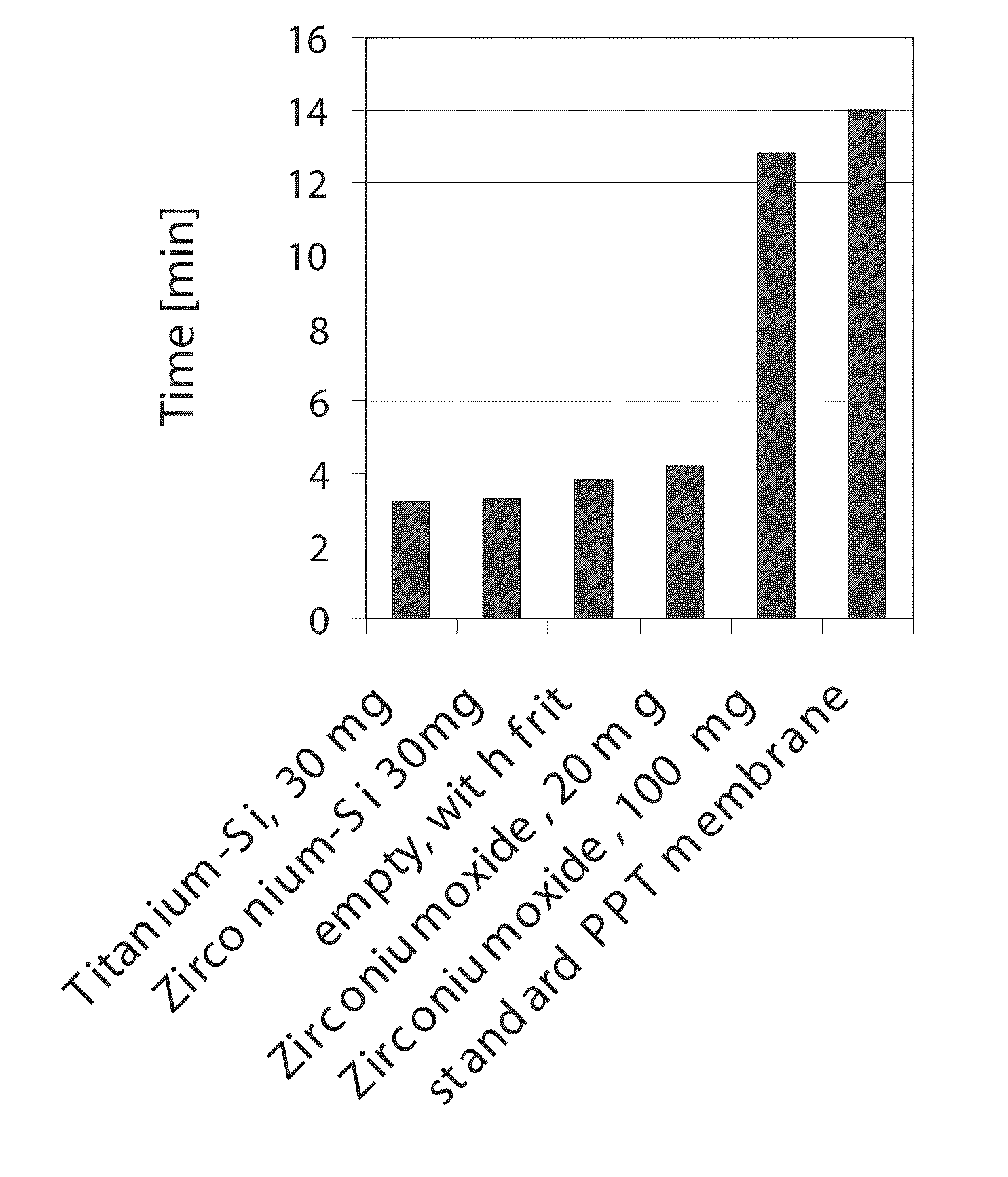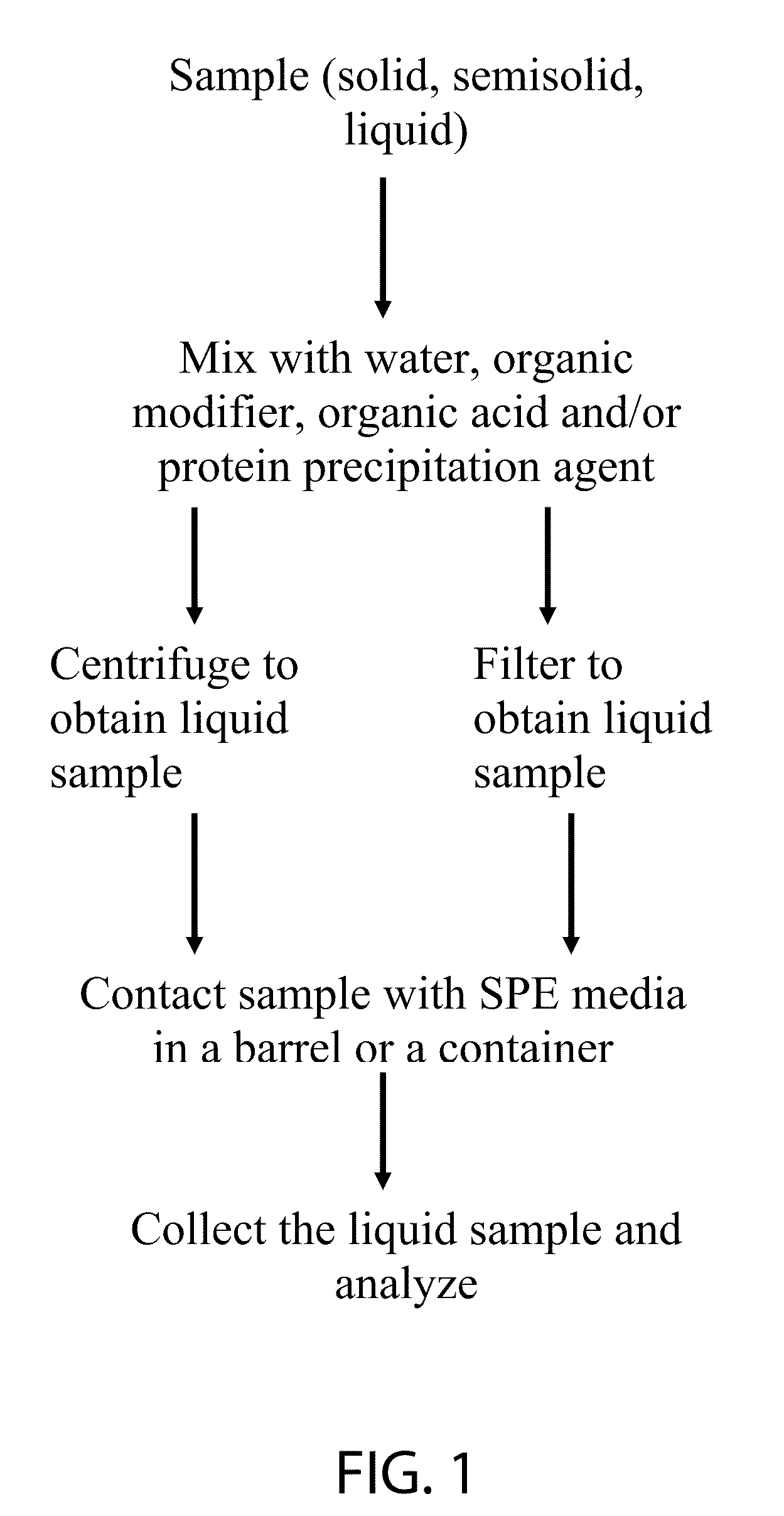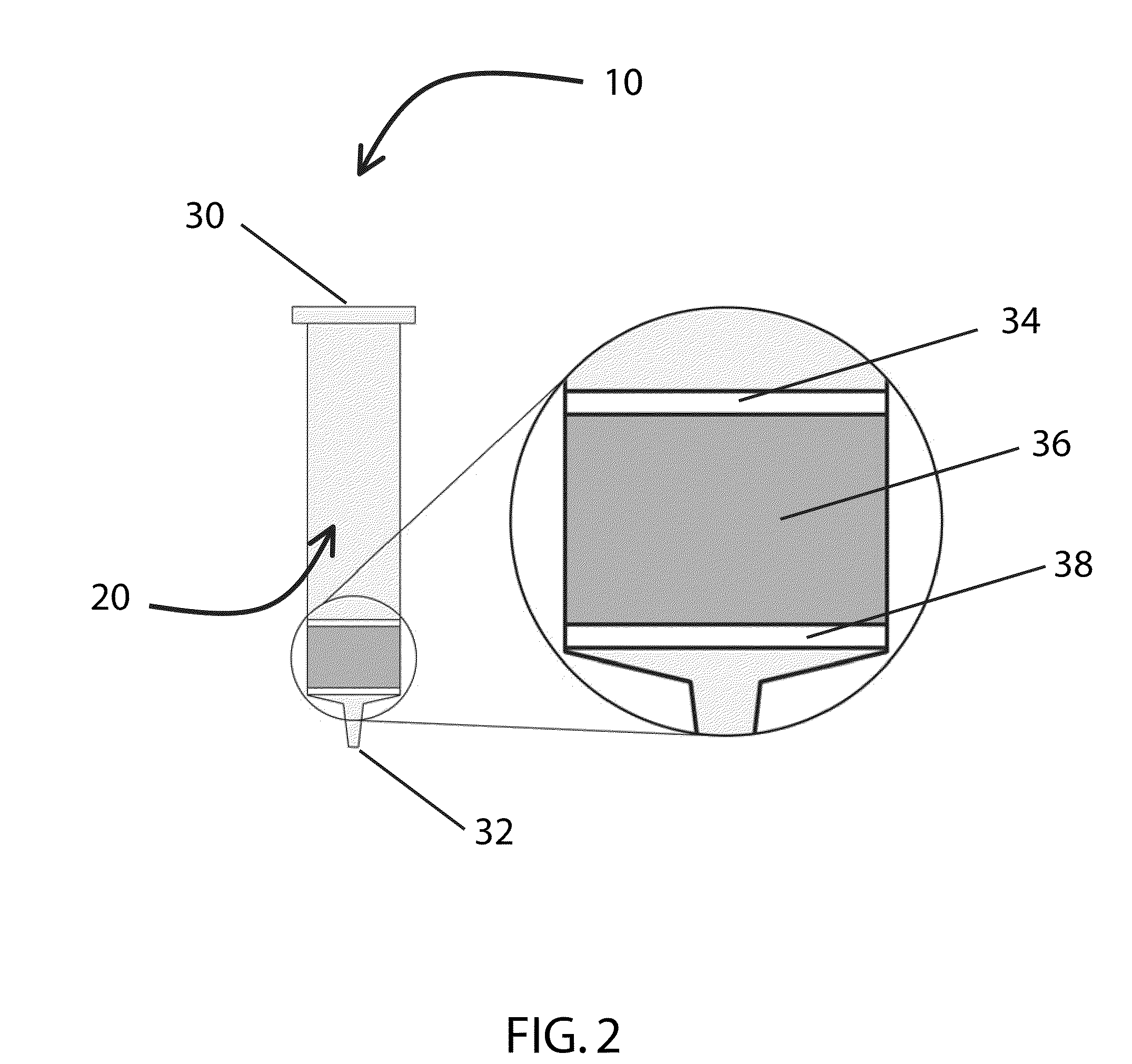Compositions and methods for solid phase extraction of lipids
a technology of solid phase extraction and lipids, which is applied in the direction of other chemical processes, liquid displacement, separation processes, etc., can solve the problems of interfering molecules that are particularly problemati
- Summary
- Abstract
- Description
- Claims
- Application Information
AI Technical Summary
Benefits of technology
Problems solved by technology
Method used
Image
Examples
example 1
Synthesis of Zirconia-Coated Silica and Titania-Coated Silica was Demonstrated Successfully
[0130]To demonstrate the feasibility of coating silica with zirconia or titania substrates, a pilot study was conducted. Spherical porous silica particles (Daiso Co., Ltd., Osaka, Japan) were pretreated for bonding to the substrates by placing the silica particles into a vacuum oven at 150° C. for 16 hours under full vacuum. To assure anhydrous reaction conditions, the silica was azeotropically dried by adding the silica to HPLC-grade toluene in a 5 L round bottom flask with a Dean Stark trap attached, heating the mixture to 112° C., then draining the flask through the Dean Stark trap a total of 5 times.
[0131]After cooling the solution to 35° C., 70% zirconium propoxide in propanol was added to the solution through a dry addition funnel over a period of 1 hour. In this mixture, the zirconium propoxide was reduced to the unbound alcohol by-product, and the zirconia was grafted onto the silica f...
example 2
Filtration Time of Biosamples was Improved Using a Hybrid SPE-Precipitation 96-Well Plate
[0135]To determine the effect of the arrangement of SPE media, frits, and membranes in the wells of a 96 well plate on the rate of filtration flow through the wells, the following experiment was conducted.
[0136]A 96-well plate was prepared in which each well was packed with SPE media that was sandwiched between a 20 μm polyethylene frit at the top of the well, and a 0.2 μm filter / membrane at the bottom of the well. Four different SPE media were used to pack the wells: 30 mg of titania-coated silica prepared using the methods described in Example 1, 30 mg of zirconia-coated silica prepared using the methods described in Example 1, 20 mg of zirconium oxide, and 100 mg of zirconium oxide. As a control, some wells contained only a 20 μm polyethylene frit at the top of each well, and a 0.2 μm filter / membrane at the bottom of each well, with no SPE media in between. For comparison, other wells contain...
example 3
Coating Silica SPE Media with Zirconia or Titania Significantly Improved the Extraction of Phosphatidylcholine from Samples
[0140]To determine the effect of zirconia and titania coatings on the capacity of the silica SPE media for extracting phosphatidylcholine, the following study was conducted, comparing the capacities of three different SPE media.
[0141]1 ml polypropylene SPE cartridges containing the three different extraction media were prepared. The extraction media were held in place within the SPE cartridges using upper and lower 20 μm polyethylene frits. The first SPE cartridge contained 30 mg of uncoated porous silica (DAISOGEL® SP, Daiso Co., Ltd., Osaka, Japan) with a particle size of 20 μm. The second cartridge contained 30 mg of titania-coated silica, prepared using the methods described in Example 1. The third cartridge contained 30 mg of zirconia-coated silica, prepared using the methods described in Example 1. A fourth cartridge containing 30 mg of titania-coated sili...
PUM
| Property | Measurement | Unit |
|---|---|---|
| Length | aaaaa | aaaaa |
| Pore size | aaaaa | aaaaa |
| Pore size | aaaaa | aaaaa |
Abstract
Description
Claims
Application Information
 Login to View More
Login to View More - R&D
- Intellectual Property
- Life Sciences
- Materials
- Tech Scout
- Unparalleled Data Quality
- Higher Quality Content
- 60% Fewer Hallucinations
Browse by: Latest US Patents, China's latest patents, Technical Efficacy Thesaurus, Application Domain, Technology Topic, Popular Technical Reports.
© 2025 PatSnap. All rights reserved.Legal|Privacy policy|Modern Slavery Act Transparency Statement|Sitemap|About US| Contact US: help@patsnap.com



